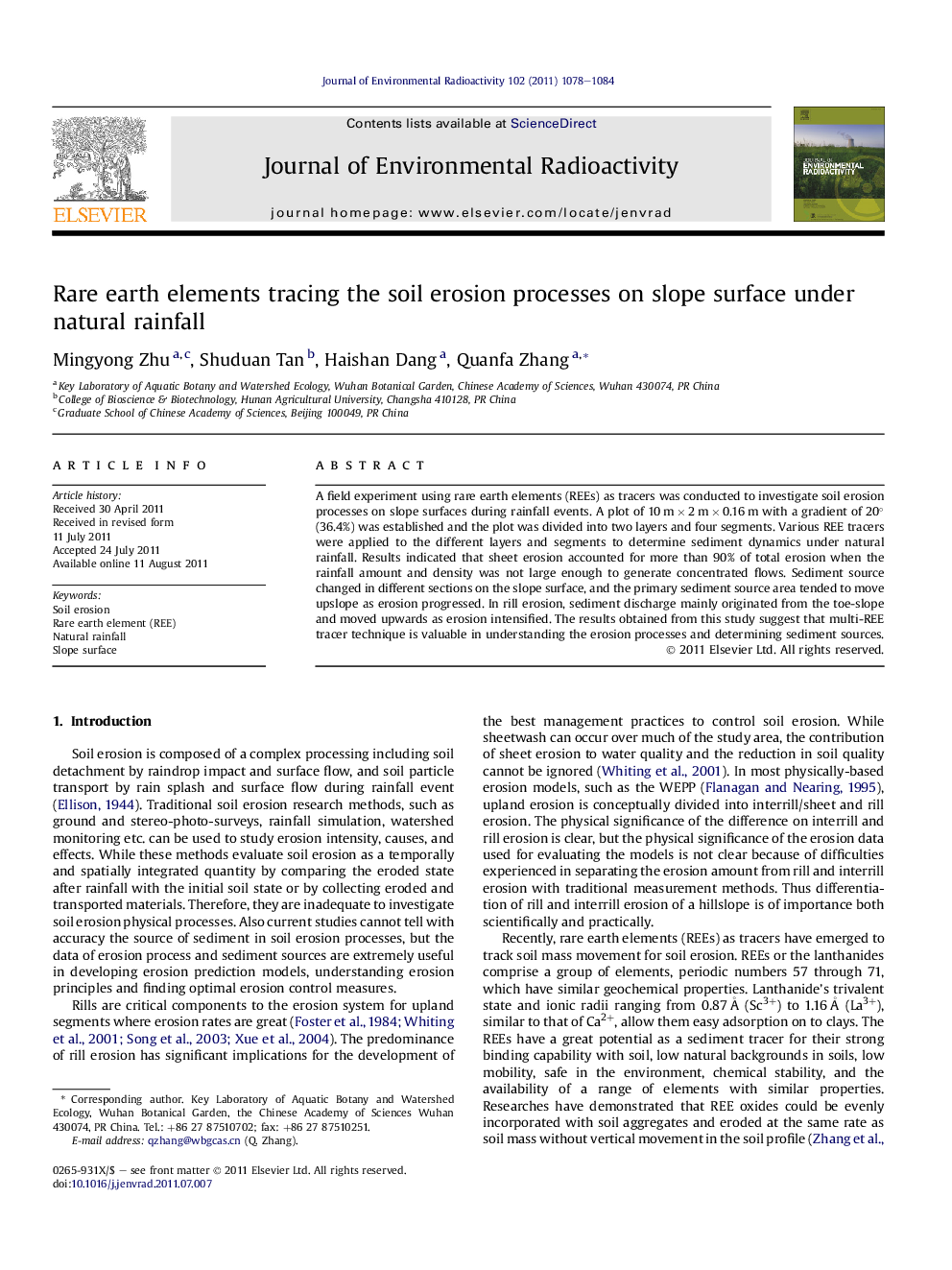| Article ID | Journal | Published Year | Pages | File Type |
|---|---|---|---|---|
| 1738514 | Journal of Environmental Radioactivity | 2011 | 7 Pages |
A field experiment using rare earth elements (REEs) as tracers was conducted to investigate soil erosion processes on slope surfaces during rainfall events. A plot of 10 m × 2 m × 0.16 m with a gradient of 20° (36.4%) was established and the plot was divided into two layers and four segments. Various REE tracers were applied to the different layers and segments to determine sediment dynamics under natural rainfall. Results indicated that sheet erosion accounted for more than 90% of total erosion when the rainfall amount and density was not large enough to generate concentrated flows. Sediment source changed in different sections on the slope surface, and the primary sediment source area tended to move upslope as erosion progressed. In rill erosion, sediment discharge mainly originated from the toe-slope and moved upwards as erosion intensified. The results obtained from this study suggest that multi-REE tracer technique is valuable in understanding the erosion processes and determining sediment sources.
► Soil erosion processes with rare earth elements was conducted under natural rainfall. ► Experimental setup developed here has seldom implemented in the world. ► Sheet erosion is the main erosion type and main contributor to sediment loss. ► Sediment source changed in different sections on the slope surface. ► The primary sediment source area tended to move upslope as erosion progressed.
